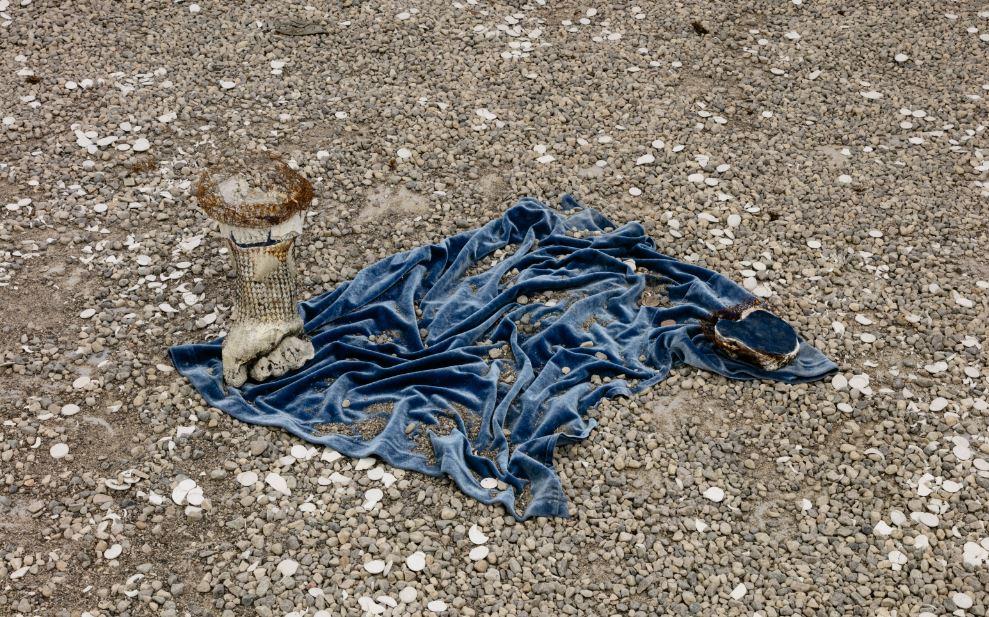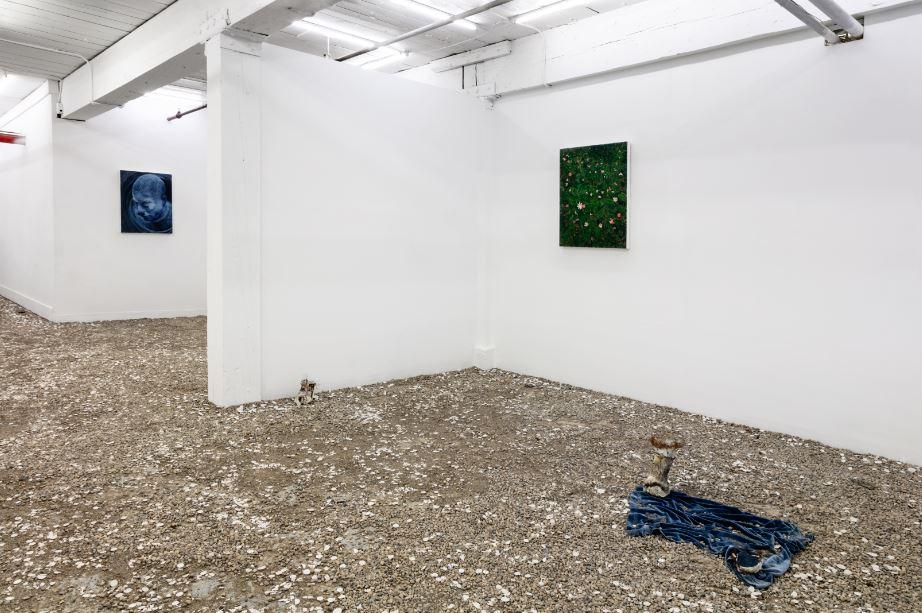
Andrei Tarkovsky's seminal 1979 film Stalker was produced in the late Brezhnev era of the Soviet Union, and centres on the journey of three men to a forbidden location called the ‘Zone’– the product of an extraterrestrial visitation, purported to manifest the deepest desires of any person to enter it. Every empire has an end, an exhibition at Toronto’s Franz Kaka, juxtaposes the work of Jennifer Carvalho and Jenine Marsh to explore the material sensibilities and conceptual dialogues of their art practices through the lens of the film. Together, Marsh’s sculptures and Carvalho’s paintings summon the themes and visual languages of Stalker; its mysterious ‘Zone’; and its investment in time utilizing what Tarkovsky referred to as the “long take.”
Like the ‘Zone’ of the film, a site of antagonism and obsession, the artists play with the anxiety present in zones of indistinction and estrangement. Both Carvalho and Marsh consider through the lens of Stalker that science fiction is an inch away from another science fiction, but also from reality. Simulating slow moments of time and place, they encourage us to consider that while we cannot know the future– and though there are many of them– we are still bound to and responsible for the present.
For Tarkovsky, cinema could produce a more material expression of time when one identified that something “truthful,” outside purely visual depiction, was playing out beyond the limits of the screen. In his words, one would sense “a pointer to something stretching out beyond the frame and to infinity; a pointer to life.1” Carvalho and Marsh embrace this investment in time to interpret a landscape both lush and entropic, tender and cold, illustrated through the symmetry of growth and decay. In her paintings inspired by scenes from the film, Carvalho shows dense growth of forest flora and amphibious nature in fleshy tones, an unreality of colours that suggests the possibility to become something else. By sanding down and building up layers of paint, she exposes the malleability of the medium and stretches its materiality in this process of becoming.
The relationship between art and cinema is that of taking part in world-production, which comprises the efforts of human and nonhuman beings. Carvalho and Marsh show us this profound ability to design and pass-through otherwise unanticipated spaces and participate in setting up a world that is equal parts corporal and unworldly. Tarkovsky utilized the long take as a means of contemplating the marks of human civilization as they are covered over and repossessed by nature and the passage of time. The artists capture this zone of indistinction between science fiction, dreamscape, and political allegory. The result is a ghostly environment not populated by people, but containing the legacies of their existence – essentially a presence that is an absence.


Jennifer Carvalho & Jenine Marsh, Every empire has an end, 2019, Installation views at Franz Kaka, Toronto, ON
Marsh’s sculptures of hands in a fist, self-molds of her right hand from gypsum cement, also contain several pennies to “hold onto.” They function as something between a wallet, weapon, and body. Molds of coins are mixed in with found pebbles and debris across the floor of the gallery. The molds are evacuated of their power as currency, nowcasts of negative space from commodity-based life. In her process, Marsh leaves the coins on the tracks of train yards to be flattened, muting their stable symbolism through trespassing in a liminal space that is somewhere between open (public) and closed (private). In what she refers to as a “manipulated sculpture practice,” Marsh recuperates a sliver of agency in late capitalism, here situated in this context of being haunted by hyper-awareness of a double failure from the Cold War system; the definitive collapse of communism and the Soviet Union, and the slow decline of capitalist globalization.
Jacques Derrida’s notion of “hauntology” in Spectres of Marx makes use of the repression of history to understand our fixation on failed futures. It demonstrates that events meant to be buried will continue to return as ghostly traces. The idea of “haunting” resists the narrowing and standardization of time and space. Mark Fisher used this framework to explain that what haunts us in the twenty-first century is not the past, but “all the lost futures that the twentieth century taught us to anticipate.2” This “disappearance of the future” is responsible for deadening our abilities to imagine the world as being drastically different from how we know it to be. In the exhibition, as in Stalker, this world is not so much a radical departure from our own as a sort of uncanny tiptoe away.
Narrating a sepia tracking shot of objects such as syringes, coins, religious icons, guns and rusted machinery submerged underwater, the Stalker’s wife recites from the Book of Revelation 6:12-17, “The Sixth Seal: Terror.” In a whispered tone, she describes a great earthquake, blackened sun, and blood-red moon, the stars falling to earth. Then, she laughs. The scene anticipates the nature of the 'Zone' itself and the mysterious event purported to have created it. It catalogues artifacts of a civilization, disconnected and strange, inhuman and empty. The recitation describes one of our greatest collective terrors, that of apocalypse and final judgment; potentially in this fear is that even without a human presence, the planet would continue its lifecycle without us.
On their journey to the 'Zone' – through patrolled police cordons, circuitous tunnels, and supernatural traps – the Stalker explains its fundamental nature to his two companions: “I don’t know what it’s like when there is no one here… Whatever happens here, depends not on the 'Zone', but on us.” What becomes tangible in this exhibition is not what I would characterize as a pessimism, but rather a measured thoughtfulness toward the possibility of a future in which the world is unrecognizable, and the fact that we are responsible for the shape that takes – which includes whether humanity is altogether extinct or not.